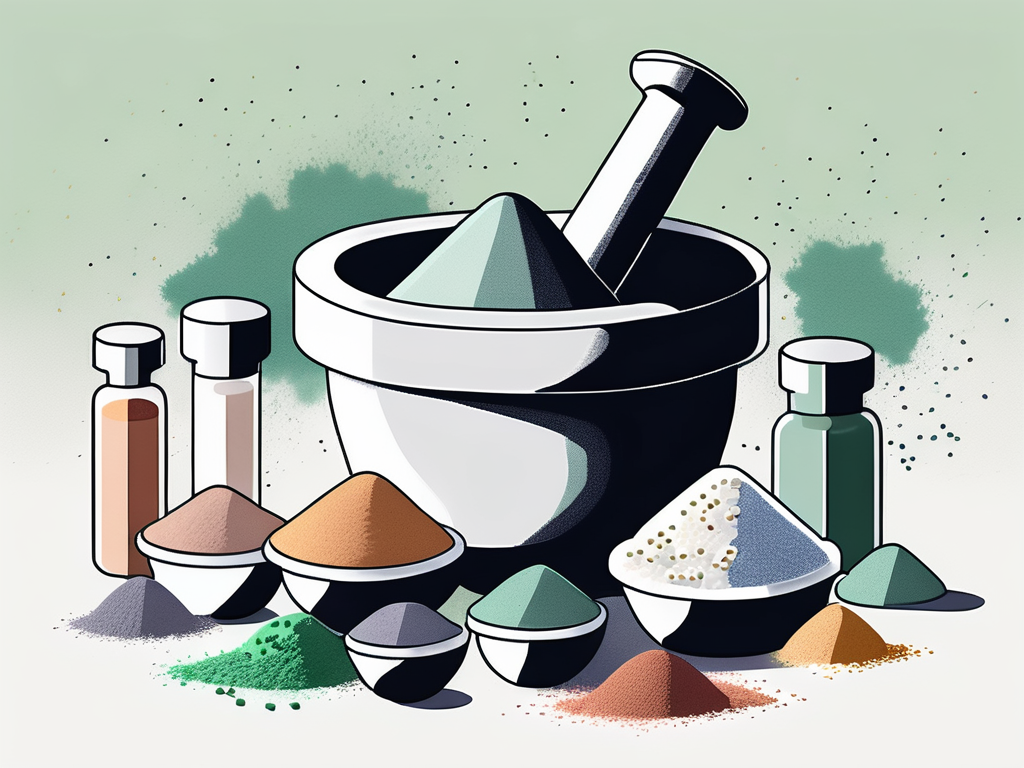In the world of pharmacy, there’s a lot more than meets the eye. Beyond the active ingredients that make up the bulk of your medication, there are a host of other components that play a crucial role. These are known as inactive ingredients, and they’re the unsung heroes of the pharmaceutical world. In this article, we’re going to delve deep into the world of inactive ingredients, exploring their purpose, their types, and how they’re used in compounding pharmacies.
Compounding pharmacies are a specialized type of pharmacy that make medications from scratch. This means they have the ability to customize the ingredients, dosage, and form of a medication to meet a patient’s unique needs. This often involves the use of inactive ingredients, which can be tailored to improve the medication’s taste, appearance, stability, and absorption. So, buckle up and get ready for a deep dive into the fascinating world of inactive ingredients and compounding pharmacies.
Understanding Inactive Ingredients
Before we can fully appreciate the role of inactive ingredients in compounding pharmacies, we first need to understand what these ingredients are. Despite their name, inactive ingredients are far from inactive. They play a crucial role in the formulation of medications, helping to ensure that the active ingredient is delivered to the body in the most effective way possible.
Some inactive ingredients help to improve the taste or appearance of a medication, making it more palatable for the patient. Others help to stabilize the medication, ensuring that it remains effective for longer. And some inactive ingredients help to improve the absorption of the active ingredient, ensuring that it’s delivered to the body in the most efficient way possible.
Types of Inactive Ingredients
There are many different types of inactive ingredients, each with its own unique properties and uses. Some of the most common types include binders, fillers, disintegrants, lubricants, and coatings. Binders are used to hold the ingredients of a tablet together, while fillers are used to increase the size of the tablet to make it easier to swallow. Disintegrants help the tablet to break apart in the stomach, lubricants prevent the tablet from sticking to the machinery during production, and coatings are used to improve the taste and appearance of the tablet.
Other types of inactive ingredients include preservatives, which help to prevent the growth of bacteria and fungi in the medication; colorants, which give the medication its color; and flavorings, which improve the taste of the medication. Each of these ingredients plays a crucial role in the formulation of the medication, helping to ensure that it’s safe, effective, and palatable for the patient.
The Role of Inactive Ingredients in Compounding Pharmacies
Compounding pharmacies have a unique role in the world of pharmacy. Unlike regular pharmacies, which simply dispense medications, compounding pharmacies make medications from scratch. This gives them the ability to customize the ingredients, dosage, and form of a medication to meet a patient’s unique needs. And this is where inactive ingredients come in.

Inactive ingredients are a crucial part of the compounding process. They can be tailored to improve the medication’s taste, appearance, stability, and absorption, making it more suitable for the patient. For example, a compounding pharmacy might use a specific type of binder to make a tablet that’s easier for a patient with swallowing difficulties to take. Or they might use a specific type of coating to improve the taste of a medication for a child.
Customizing Inactive Ingredients
One of the key benefits of compounding pharmacies is their ability to customize inactive ingredients. This can be particularly beneficial for patients with allergies or sensitivities to certain ingredients. For example, if a patient is allergic to a certain type of preservative, a compounding pharmacy can formulate a medication without that preservative.
Similarly, if a patient has difficulty swallowing large tablets, a compounding pharmacy can use a different type of filler to make a smaller tablet. Or if a patient has a sensitivity to a certain type of colorant, a compounding pharmacy can formulate a medication without that colorant. This level of customization can make a big difference to a patient’s ability to take their medication as prescribed, improving their health outcomes.
Challenges and Considerations
While the use of inactive ingredients in compounding pharmacies offers many benefits, it also presents some challenges. One of the key challenges is ensuring that the inactive ingredients do not interfere with the effectiveness of the active ingredient. This requires a deep understanding of the properties of each ingredient and how they interact with each other.

Another challenge is ensuring that the medication is stable. Some inactive ingredients can cause a medication to degrade more quickly, reducing its effectiveness. This requires careful formulation and storage to ensure that the medication remains effective for as long as possible.
Regulatory Considerations
There are also regulatory considerations to take into account when using inactive ingredients in compounding pharmacies. In many countries, compounding pharmacies are regulated differently to regular pharmacies, and there are specific rules and regulations regarding the use of inactive ingredients.
For example, in the United States, the Food and Drug Administration (FDA) has a list of approved inactive ingredients that can be used in compounding pharmacies. Compounding pharmacies must ensure that they only use ingredients from this list, and that they comply with all other relevant regulations. This can be a complex process, requiring a deep understanding of the regulatory landscape.
Conclusion
In conclusion, inactive ingredients play a crucial role in the world of compounding pharmacies. They help to ensure that medications are safe, effective, and palatable, and they offer the potential for customization to meet a patient’s unique needs. However, their use also presents some challenges, including ensuring that they do not interfere with the effectiveness of the active ingredient, and complying with regulatory requirements.

Despite these challenges, the benefits of inactive ingredients in compounding pharmacies are clear. They offer the potential to improve patient outcomes, making medications more accessible and effective for a wider range of people. And with the right knowledge and expertise, these benefits can be realized, making the world of pharmacy a more inclusive and effective place.



